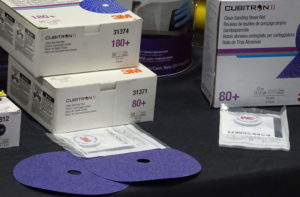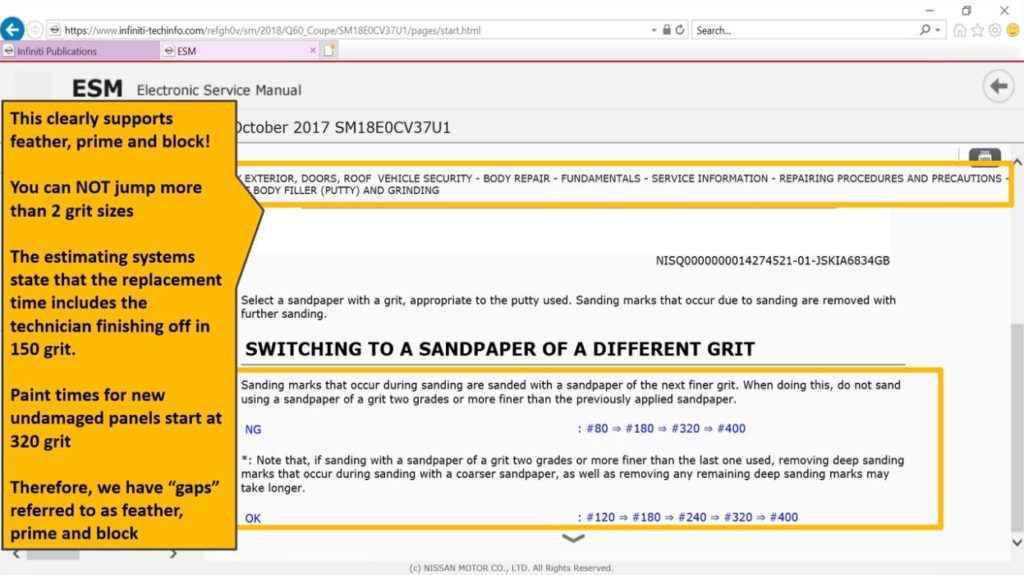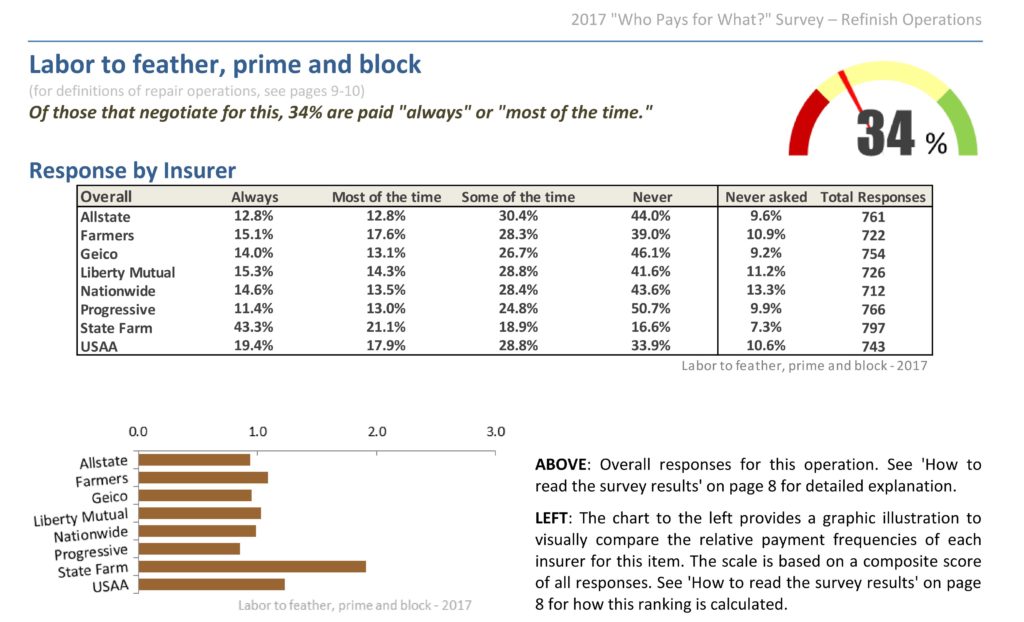
‘This one blew my mind’: Anderson shows feather, prime and block supported by Nissan repair procedures
By onBusiness Practices | Education | Repair Operations
Nissan OEM repair procedures for the 2018 Infiniti Q60 clearly forbid shops from jumping two grades of grit, a validation of shops’s need for feather, prime and block that Collision Advice CEO Mike Anderson said “blew my mind.”
Of all the things he’s found in OEM repair procedures, this direction made him “jump through the roof,” Anderson said Thursday on the second installment of a two-part Collision Advice-Nissan webinar on accessing OEM repair procedures.
“This one blew my mind,” he said.
Mitchell, Audatex and CCC say their times are for a body technician to finish off at 150 grit, according to Anderson. All three estimating services say that paint time refers to a new, undamaged panel at 320 grit, he said.
All abrasive manufacturers and paint manufacturers he’s spoken to say you can’t jump more than two grit sizes. “It’s feather, prime and block,” Anderson said of the gap between the grit levels.
Despite this, auto body shops in a 2017 “Who Pays for What?” survey by Collision Advice and CRASH Network reported that the nation’s Top 8 insurers only paid for feather, prime and block “always” or “most of the time” about 34 percent of the time when asked.
“Buckle up, y’all,” Anderson said Thursday: Nissan concurs in its OEM repair procedures that feather, prime and block is necessary.
“Sanding marks that occur during sanding are sanded with a sandpaper of the next finer grit,” Nissan states in the instructions for a 2018 Infiniti Q60. “When doing this, do not sand using a sandpaper of a grit two grades or more finer than the previously applied sandpaper. …
“Note that, if sanding with a sandpaper of a grit two grades or more finer than the last one used, removing deep sanding marks that occur during sanding with a coarser sandpaper, as well as removing any remaining deep sanding marks may take longer.”

Nissan states not to jump two grit sizes or more in the repair procedures for the 2018 Infiniti Q60, Collision Advice and Nissan said in a May 2018 webinar. (Screenshot from Collision Advice webinar featuring Nissan images)
The OEM even provides an example.
Jumping from “#80 ⇒ #180 ⇒ #320 ⇒ #400” is unacceptable, but “#120 ⇒ #180 ⇒ #240 ⇒ #320 ⇒ #400” is fine, Nissan writes.
“This is awesome,” Anderson said. “… Infiniti clearly spells it out for us.”
Nissan repeats the directive in the repair procedures for the 2018 models of its No. 1 and No. 2 vehicles in 2017: the Nissan Rogue and Nissan Altima. It’s likely present in the instructions for other Nissans and Infinitis as well.
More information:
Collision Advice YouTube channel, April 24, 2018
“Nissan INFINITI Tech Info Part 2 Webinar”
Collision Advice YouTube channel, May 28, 2018
Nissan collision repair procedures website (use Internet Explorer)
Infiniti collision repair procedures website (use Internet Explorer)
Images:
3M sanding materials of different grits are seen at NACE 2017. (John Huetter/Repairer Driven News)
Auto body shops in a 2017 “Who Pays for What?” survey reported that the nation’s Top 8 insurers only paid for feather, prime and block “always” or “most of the time” about 34 percent of the time when asked. (Provided by Collision Advice and CRASH Network)
Nissan states not to jump two grit sizes or more in the repair procedures for the 2018 Infiniti Q60, Collision Advice and Nissan said in a May 2018 webinar. (Screenshot from Collision Advice webinar featuring Nissan images)

